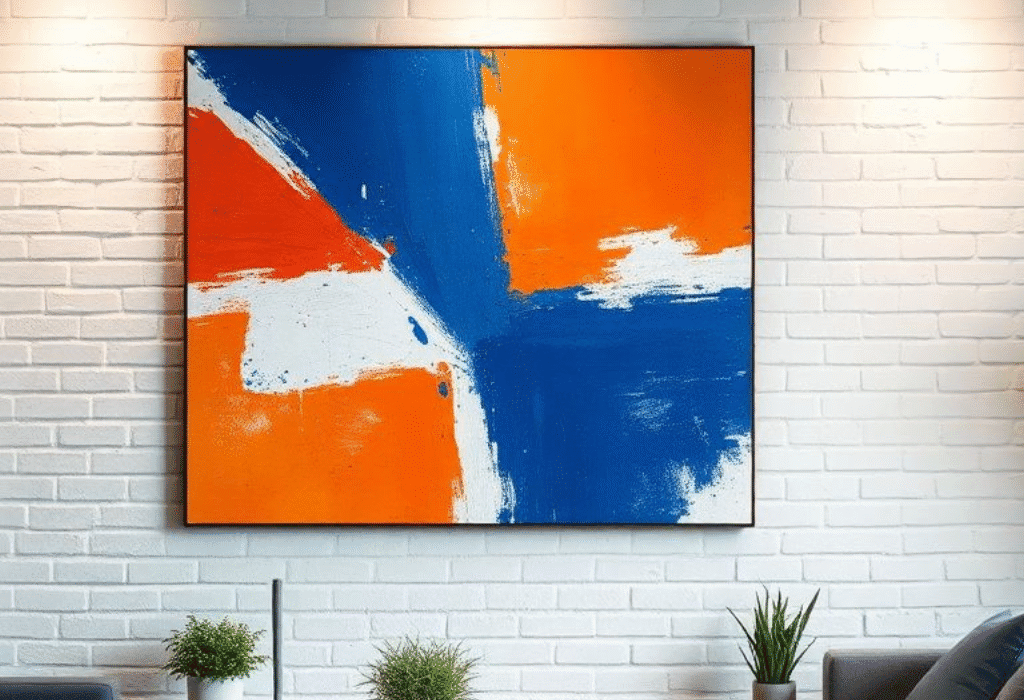
Wall Art Paintings
Introduction
The popularity of wall art in homes and offices is rising fast. People now see it as a way to add personality and style to any space. A well-chosen wall painting can instantly change the vibe, making a room feel warmer, more lively, or calmer. Picking the right piece isn’t just about looking good; it reflects who you are. It’s essential to match your art with your space and personal taste. In this guide, you’ll learn how to choose, place, and care for your wall art to make your rooms stand out.
What is Wall Art Painting?
Wall art painting covers a wide range of creative ways to decorate walls. It includes murals, canvas paintings, framed art, and mixed media projects. Murals are large artworks painted directly onto walls, while canvas paintings often add a classic touch. Framed art offers a polished look, and mixed media combines different materials. Wall art can be made DIY or commissioned from professional artists. Knowing the options helps you pick what fits your style best.
Benefits of Incorporating Wall Art Paintings
Adding wall paintings boosts your space’s visual interest and creates eye-catching focal points. They reveal your personality and can set the mood of a room. A striking piece can also raise the perceived value of your home or office. Studies show that personalized decor makes people feel happier and more comfortable. And let’s face it: a good piece of wall art can turn a dull room into something memorable.
Selecting the Perfect Wall Art Painting for Your Space
Choosing Styles and Themes
Find a style that matches your taste and the room’s decor. Popular styles include abstract, modern, vintage, nature-inspired, and contemporary art. For example, modern art suits minimalist spaces, while vintage adds charm to rustic rooms. Think about what excites you—whether it’s bright colours or calming landscapes. Your art should resonate with your interests and lifestyle.
Considering Size and Scale
Getting the size right is key. Measure your wall before buying or creating art. Large pieces look stunning above sofas or beds, while smaller works work well in tight corners. Use the “two-thirds rule”: your art should fill about two-thirds of the space’s width. This creates balance without overloading or underwhelming the wall.
Color Coordination and Mood Setting
Color ties everything together. Pick hues that match your existing decor for a harmonious look. Bright, bold colors energize a room, while soft, muted tones promote calmness. Think about the mood you want. Warm reds and yellows can boost energy, while cool blues and greens soothe. Understanding color psychology ensures your wall art enhances your desired ambiance.
Placement and Arrangement Strategies
Optimal Wall Placement
Identify focal walls where the art will shine. These are usually large, empty spaces that draw attention. Avoid cluttered areas; too much decoration can look chaotic. For a bedroom, a big canvas above the bed works great. In living rooms, consider the wall behind the sofa to create a centrepiece.
Layout and Composition Tips
Mix and match ways to display art. Creating gallery walls with several smaller pieces offers variety. Symmetrical arrangements give a clean, balanced look, while asymmetrical setups add more personality. Always test your layout first using paper templates. This prevents unnecessary holes and helps visualise the final placement.
Frame and Mounting Techniques
Frames add a finished touch and protect your art. Match frames to your decor: sleek for modern, ornate for vintage. Mounting options include floating frames, shadow boxes, and gallery setups. Use proper tools and techniques to prevent damage. Secure nails and hooks carefully, especially with heavy or large pieces.
Maintaining and Caring for Wall Art Paintings
Cleaning and Preservation
Regular dusting keeps your art looking fresh. Use soft cloths or brushes to remove dirt gently. Keep your art away from direct sunlight, which can fade colours. Control humidity and temperature to prevent warping or mold. Conservation experts recommend keeping art in stable conditions to preserve it long-term.
Repairing and Restoring Artwork
Handle minor scratches or fading quickly. Light touch-ups with matching colors can do the trick in many cases. For more serious damage, seek professional restoration. DIY repairs are possible but should be done carefully to avoid further damage. Preservation is about longevity—treat your artwork with care.
How to Budget and Invest in Wall Art Paintings
Affordable Options and DIY Alternatives
You don’t always need to spend a fortune. Local artists, craft fairs, and online marketplaces offer great, affordable art. You can even create your own wall art using simple techniques. Repurposing old frames or painting your own designs adds a personal touch without breaking the bank.
Investing in Authentic and High-Quality Pieces
Genuine art and original works often hold or increase their value over time. Look for signed pieces and verify the artist’s credibility. High-quality prints can be a cheaper alternative but may not last as long. For serious collectors, investing in original art provides both joy and potential appreciation. Collectible wall art can grow in value, turning your decor into an investment.
Conclusion
Choosing wall art involves selecting the right style, size, and placement that match your personality and space. Proper maintenance keeps your paintings looking fresh and vibrant. Remember, wall art has the power to transform any space from ordinary to extraordinary. Start small, experiment with different pieces, and gradually build a collection that reflects your style. Your walls are a blank canvas—make them a reflection of what you love.
